In the search for fast and efficient methods to stop climate change and its consequences, there is one area we cannot afford to overlook – the energy transition: the switch from traditional, mostly fossil, energy sources to renewable ones such as hydro power, sunlight, and wind.
Worldwide, we are far from the “affordable and clean energy for all” envisaged in the global sustainability goals. So how can we drive this change in time? A key lever lies in project development – or to put it another way: it is currently considered one of the biggest obstacles. Before wind turbines can be erected and solar panels installed to ultimately generate clean energy, project developers face a multitude of challenges. From bureaucratic hurdles such as obtaining dozens of regulatory approvals to complex project rights and local specifics that must be carefully navigated – and no certainty of ultimately obtaining all necessary permits. All these steps require a lot of work, resources, and, above all, time – time that should not be wasted given the urgency of a new energy system.
The Energy Transition Landscape: Bottlenecks and Hurdles
Before examining the role of Project Development, it’s essential to understand the challenges that characterize the energy transition landscape: Financial and political barriers, social acceptance issues, and complex technical problems. There are quite a few hurdles that need to be overcome before a solar collector can start collecting light. Project development plays a key role in overcoming these bottlenecks. It bridges the gap between ideas and implementation, transforming ambitious renewable energy goals into concrete, working projects.
It all starts with identifying and planning renewable energy facilities. This requires developers to search for a suitable site, reach agreements with landowners, apply for grid connections, understand and consider local factors such as environmental protection or legal requirements, and reach agreements with local communities and political institutions. Without effective project development, even promising renewable energy concepts remain on the shelf. And: all these steps require significant resources and a substantial financial investment.
Taking risks in energy investments: Structure of an investment over time
Financing a solar project involves a high realization risk at the beginning, which is gradually reduced during the operating phase. This means a high financial risk for project developers – which sometimes deters them from taking on further projects or even entering into project development, as costs for development have to be advanced. They are therefore dependent on investors to finance and enable this essential step toward the energy transition, especially because returns of investment from project rights can only be expected two to five years later.
The risk landscape is complex and characterized by a dense web of regulatory intricacies, administrative requirements, the lack of specialized planning knowledge, local opinions, and the uniqueness of the context. All these factors contribute to slowing down the process significantly. On average, the development phase of solar projects and battery energy storage systems (BESS) is two years, and for wind projects, it can be as long as five years. Industry observations show that after the initial search for potential sites, only a fraction of all projects receive all necessary permits and reach “ready to build” status. Consequently, significant resources are wasted during this process.
The graphic shows the development of investment risk over time and the predictability of cash flow. The risk is highest during project development and decreases over time. Conversely, cash flow predictability increases as the project progresses. While many investors do not invest in physical energy infrastructure until projects have reached “ready to build” status, a massive success factor of the energy transition lies in the area of project development and its financing.
Source: Pelion Green Future
Deep Dive into Project Development – Success through Collaboration
Having outlined the financial risk associated with investing in the development phase of renewable energy projects, we now want to take a closer look at the specific challenges that arise during project development – and show how we overcome them together with our partners. At Pelion Green Future, we not only provide financial resources but also expertise, methodological and strategic support and work closely with our development partners.
The Developer’s View
Our development partners know how many steps, and how many ups and downs it takes to build a solar park. A journey that is more complex than it might seem at first glance. One of our partners is Solparc Energy GmbH (Solparc), a project developer for renewable energy in Germany, specializing in solar. Solparc works closely with communities and citizens to develop profitable solar projects in line with local conditions.
A project begins with the search for a suitable open space, a piece of land that will be converted into a solar park. To lease the land, we first must reach an agreement with the landowners. This sounds quite simple at first, as many owners initially show a willingness to sign agreements, but it often takes longer than expected before they are signed. This is usually due to the tax implications associated with leasing land. Factors such as ownership must be discussed with tax advisors and lawyers. Many parties are dealing with such issues for the first time and need expert advice, which stretches out the process.
Once the land has been leased, the next step is to secure the grid connection. A step that often leads to delays and uncertainty. The grid operators have requests piling up on their desks because of the high demand. This means waiting periods of up to three months or more for statements on the grid connection point. During this time, the project still must continue, even though an important aspect on the economic viability and feasibility of the project has not yet been clarified.
And then there are the planning offices. They draw up the necessary documents for the approval process. And they too are often overloaded due to the high demand in the renewable energy sector. The search for qualified external service providers who have sufficient capacity for new projects and at the same time offer acceptable prices is like looking for the famous needle in a haystack. We evaluate the studies and expert opinions of the planning offices and take them into account in the design of the solar park and the further approval process. But how to decide where to build photovoltaic systems? This is where the local communities come into play. They are contacted by various developers with proposals for projects and it is their responsibility to make the best decisions for their region.
Let’s take a closer look at this using the example of a project in Hainstadt (Buchen) in Baden-Württemberg, where the decision-making process was exemplary. First, the municipality drew up a detailed list of criteria for evaluating the open spaces. These factors included the soil conditions and the visibility of the areas. Project developers then had the opportunity to apply by a deadline. These applications were then evaluated by the local council. In the case of Hainstadt (Buchen), the decision was made in favor of Solparc Energy GmbH. The success of the implementation of this project lies in the close cooperation between the local community, developers, and investors. Because: Local cooperation is the key. For that, developers take on a project management role to ensure that all stakeholders are involved in a timely and continuous exchange and that the issues are driven forward. Only if we involve all stakeholders from the outset our projects will succeed – and drive the energy transition forward.
The Investor’s View
Cooperation between investors and developers is particularly crucial for success and progress. The basis of this: mutual trust. Certain values simply must match up. If this is the case, we define the strategic guidelines for our projects together.
The first step at the beginning of a renewable project is evaluation. Before we invest in a new project, we first evaluate it carefully based on various criteria. For example, the project must be in line with the fundamental market drivers. This includes national expansion targets for the respective technology, the political and regulatory environment, and the interest of potential buyers in the projects being developed. Data such as the number of landowners involved, assessment of land risks, consistency with yield forecasts for the site, portfolio fit, and other factors are also examined. All these aspects flow into a financial model that includes values such as empirical cost values, assumptions on future electricity prices, and a sensitivity analysis of the risks.
However, the investor does more than just hand out money. He is a “sparring partner” for all relevant issues of the development partners. This sparring includes comprehensive support throughout the entire project development process. Starting with team-related questions to jointly overcoming challenges during project development. We also see it as our task to explore innovations and current market trends and pass them on to our development partners. This includes new technologies and their market potential, hardware aspects, or development processes. Examples include battery storage technologies, sounding out possible applications for hydrogen, or exploring innovative project structures.
Project development is the cornerstone of the energy transition. Only close cooperation between developers, local communities, grid operators, and investors can lead to success. These partnerships are based on mutual trust and one common goal: building a sustainable and green future.

